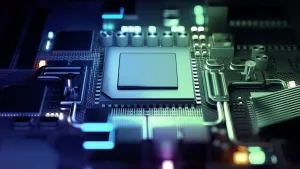
Embedded Systems in Medical Applications: the rapid adoption of artificial intelligence (AI) and Internet of Things (IoT) devices is transforming the industrial landscape. The trend is only beginning. There is a revolution underway in the advance of mobile communications, smart cities, connected transport, advanced manufacturing, and connected healthcare. The advent of 5G networks enables the use of new types of devices and high volumes of data transfer.
In healthcare, this is changing the development of electronic medical devices design. How? The convergence of IoT with embedded systems is creating new applications that will change the face of patient care. The rise of chronic illnesses and aging populations are changing the approaches to health services. Diseases like heart attacks, cancer, and diabetes kill 41 million people globally every year. That accounts for 71% of all deaths. How can medical electronics help?
Let’s look at the use of embedded systems in medical applications.
We’ll then go on to see how you can navigate this growing field.
Embedded systems in healthcare are not a new concept. They are part of larger operating systems that track vital signs, amplify sounds, and run imaging scans. Magnetic resonance imaging (MRI), X-ray scanners, and pulse oximeters have long been used in medical treatment.
But the adoption of IoT is increasing the use of advanced portable devices. One way to control chronic illnesses is to focus on reducing the risk factors. Investing in managing these diseases by detecting, screening, and treating them early is critical.
Where do embedded systems come in? They can track patients as they go about their daily lives and provide insights into their symptoms. Glucose monitors, pacemakers, and connected inhalers are now given to patients to manage their conditions. Wearable biosensors can detect the early onset of illness. And smart watches that track exercise, sleep patterns, and vital signs are becoming popular among consumers.
Advances in semiconductor technology have increased the complexity of embedded systems. This creates new possibilities for patient care. Devices are now small enough to be worn as jewelry or implanted under the skin. They use little power, so they require only small batteries. This makes new forms of treatment a reality.
How do embedded systems work?
The use of portable devices comes at a time when the COVID-19 pandemic has accelerated the adoption of telemedicine. Over 42% of Americans have used telehealth during the pandemic. That led to a 6,000% increase in claims in the summer of 2020.
During lockdowns, these devices have allowed doctors to check on patients remotely, make diagnoses, and recommend treatment. They have also helped to solve a lack of available healthcare in remote areas.
Here are five ways that medical and IoT devices enable new applications:
Smart inhalers can help track medication and provide alerts when the patient needs to take a dose. Connected apps can guide patients on how they use the inhaler and offer insights like allergen forecasts. Sensors can track the patient’s breathing and alert their doctor if there are problems. The doctor can then adjust their treatment as necessary.
Patches or implants that contain smart sensors can measure blood glucose painlessly. Patients no longer have to prick their finger or have blood drawn to test their glucose levels. Insulin delivery systems deliver a continuous flow of insulin using an automatic pump.
This makes it easier for a patient to manage their disease at home and take better control of their health. They can avoid extreme blood sugar highs and lows, reducing the burden on the healthcare system.
Smart watches no longer only count steps. They can collect a variety of biomedical data from heart rate to calorie intake and loss, water consumption, and sleep patterns. Some technologies use sensors that send microcurrents through the body to measure a patient’s health.
Embedded sensor apps in smart beds can continuously track a patient’s vital signs and alert healthcare staff if there are changes. This can help them respond to emergencies immediately and achieve better outcomes. Smart beds can also adjust to the most comfortable position for the patient.
Doctors are expanding their focus beyond emergency care to deal with the needs of aging populations. Medical devices that track a patient’s vital signs can identify potential illnesses as they develop. Doctors can intervene early, helping to prevent chronic conditions. This reduces hospital admissions and leads to better use of resources.
In embedded systems, it is important for the hardware and software to work together. Medical devices need specific software to process and analyze the data they collect. The software needs to track and control a growing range of devices, wearables, and other biomedical equipment. The hardware must be robust and reliable.
The devices must deliver data clearly for doctors and patients to interpret. They also need to be checked regularly to ensure the sensors work as they should.
The next generation of electronic medical devices design is emerging that will take healthcare to the next level. For example, wearable devices can inject a patient with medication based on their individual medical condition.
The electronic and embedded software for medical devices is becoming ever more complex. It is also essential that IoT devices keep the personal data they collect secure to protect patient privacy.
Development teams must have the right experience to deliver high-quality solutions with minimal risk, while meeting the highest medical certification standards.
At Orthogone we have the expertise that can help.
Our teams can work with you to innovate with confidence. Our developers can bring their advanced technology expertise to your team, saving time and training. This allows your team to focus on your strengths and expand your development capacity.
Contact us today to learn how you can partner with Orthogone for your embedded systems project.
Learn pros and cons of FPGAs, explore the various industries that utilize FPGAs for high-performance applications, and gain insight into when it is appropriate to use FPGAs in conjunction with CPUs.


